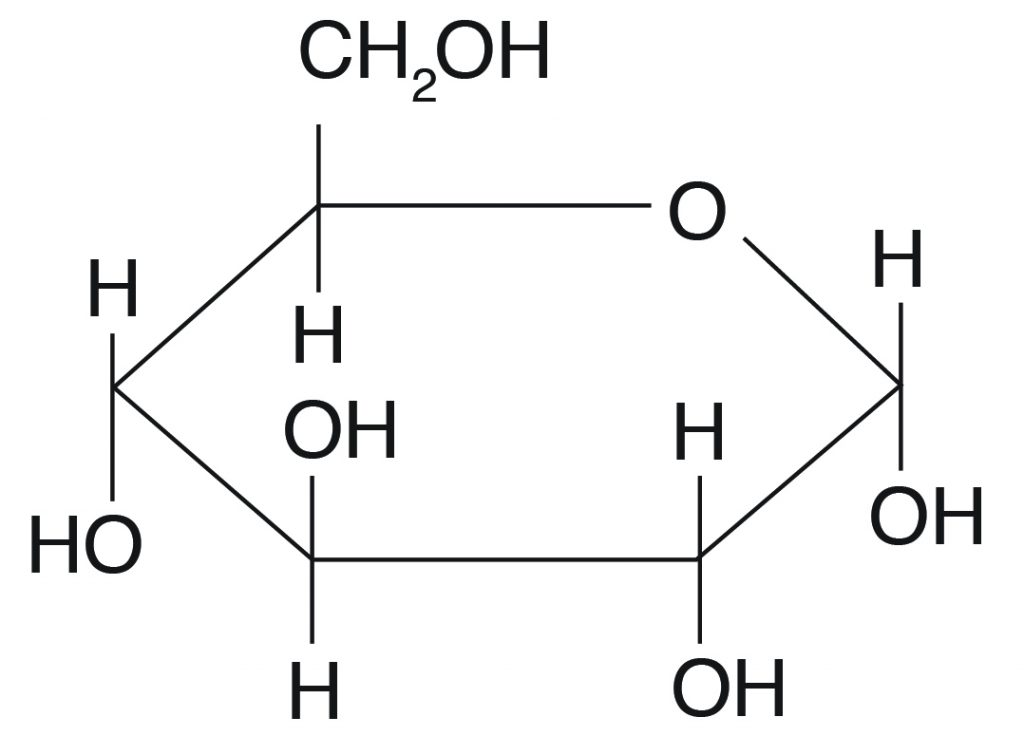Carbohydrates, as macronutrients, represent one of the primary sources of energy for our bodies, alongside proteins and fats. The name ‘carbohydrates’ reflects their composition of carbon, hydrogen, and oxygen at the chemical level. This essential nutrient category encompasses sugars, fibers, and starches, abundantly present in grains, vegetables, fruits, as well as dairy products. They constitute the foundational food groups pivotal for maintaining a healthy lifestyle.
During digestion by the digestive system, foods containing carbohydrates undergo conversion into glucose or blood sugar. This glucose serves as a crucial energy source for our cells, organs, and tissues. Any surplus energy or sugar is stored in the muscles and liver for future needs. The term ‘carbohydrate’ originates from the French ‘hydrate de carbone,’ meaning ‘hydrate of carbon.’ The general formula for this class of organic compounds is Cn(H2O)n.
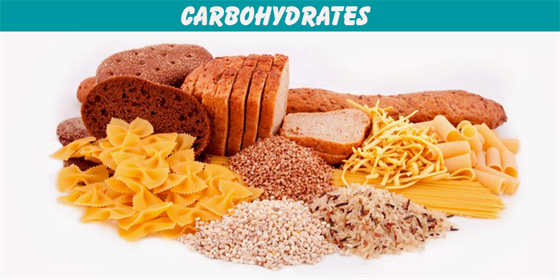
Classification of Carbohydrates
Carbohydrates are categorized into two main types: simple and complex. This classification is primarily based on their chemical structure and the degree of polymerization.
Simple Carbohydrates (Monosaccharides, Disaccharides and Oligosaccharides)
Simple carbohydrates consist of one or two sugar molecules. They are swiftly digested and converted, leading to a rapid increase in blood sugar levels. These carbohydrates are commonly found in milk products, beer, fruits, refined sugars, candies, and similar items. Often termed ’empty calories,’ they lack fiber, vitamins, and minerals.
In the realm of producers, plants synthesize glucose (C6H12O6) utilizing raw materials such as carbon dioxide and water, under the influence of sunlight. This process of photosynthesis transforms solar energy into chemical energy. Consumers then derive nourishment from plants, harnessing the energy stored within the compounds synthesized by these producers.
1. Monosaccharides
Glucose stands as a prime example of a carbohydrate monomer, or monosaccharide. Additional examples of monosaccharides encompass mannose, galactose, fructose, among others. The structural arrangement of monosaccharides is outlined as follows:
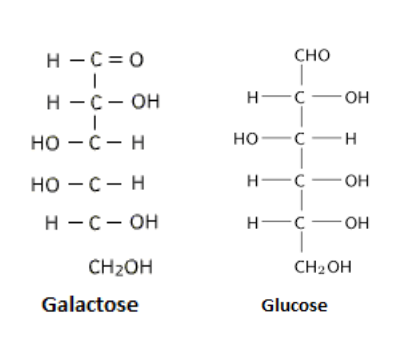
Monosaccharides may be further classified depending on the number of carbon atoms:
(i)Trioses (C3H6O3): These have three carbon atoms per molecule. Example: Glyceraldehyde
(ii)Tetroses (C4H6O4): These monosaccharides have four carbon atoms per molecule. Example: Erythrose.
Similarly, we have-
(iii) Pentoses,
(iv) Hexoses, and
(v) Heptoses
2. Disaccharides
When two monosaccharides unite, they form a disaccharide. Examples of carbohydrates comprising two monomers include Sucrose, Lactose, Maltose, and others.
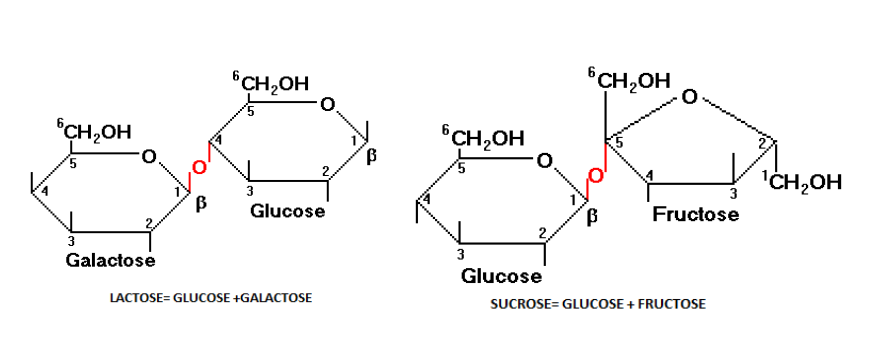
3. Oligosaccharides
Carbohydrates resulting from the condensation of 2-9 monomers are referred to as oligosaccharides. According to this classification, trioses, pentoses, hexoses, and others are all categorized as oligosaccharides.
Complex Carbohydrates (Polysaccharides)
Complex carbohydrates, known as starchy foods, consist of two or more sugar molecules. Unlike simple carbohydrates, molecules in complex carbohydrates are digested and metabolized slowly. These types of carbohydrates are plentiful in lentils, beans, peanuts, potatoes, peas, corn, whole-grain bread, cereals, and similar foods.
Polysaccharides represent a class of complex carbohydrates formed through the polymerization of numerous monomers. Examples of polysaccharides include starch, glycogen, cellulose, among others. These compounds exhibit significant branching and are homopolymers, composed solely of glucose units.
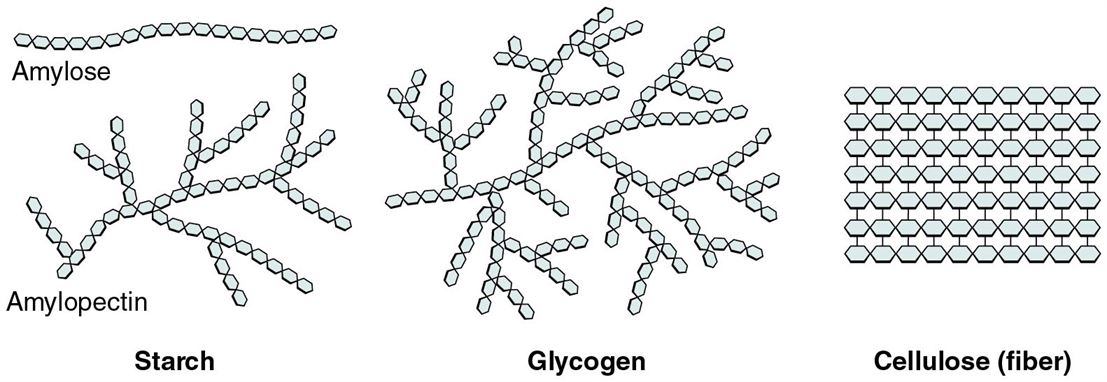
- Starch is composed of two components- amylose and amylopectin. Amylose forms the linear chain and amylopectin is a much-branched chain.
- Glycogen is called animal starch. It has a structure similar to starch, but has more extensive branching.
- Cellulose is a structural carbohydrate and is the main structural component of the plant cell wall. It is a fibrous polysaccharide with high tensile strength. In contrast to starch and glycogen, cellulose forms a linear polymer.
Functions of Carbohydrates
The primary role of carbohydrates is to supply energy to the body, including the nervous system.
Carbohydrates, encompassing sugars, starch, and fiber, are considered fundamental constituents of food, abundant in grains, fruits, and dairy products.
Carbohydrates are referred to by various names such as starch, simple sugars, and complex carbohydrates.
Additionally, they play a role in fat metabolism, preventing ketosis, and serve as the primary source of energy, inhibiting the breakdown of proteins for energy.
An enzyme called amylase aids in the breakdown of starch into glucose, ultimately providing energy for metabolism.
Sources of Carbohydrates
- Simple sugars are found in the form of fructose in many fruits.
- Galactose is present in all dairy products.
- Lactose is abundantly found in milk and other dairy products.
- Maltose is present in cereal, beer, potatoes, processed cheese, pasta, etc.
- Sucrose is naturally obtained from sugar and honey containing small amounts of vitamins and minerals.
Simple sugars rich in minerals and vitamins are commonly found in milk, fruits, and vegetables. However, many refined and processed foods such as white flour, white rice, and sugar are deficient in essential nutrients, hence they are often labeled as ‘enriched.’ It is generally healthier to consume vitamins, carbohydrates, and other organic nutrients in their natural, unprocessed forms.
Carbohydrate Foods
Consuming excessive sugar results in a disproportionate increase in calories, ultimately leading to obesity, while inadequate intake of calories can result in malnutrition. Thus, maintaining a well-balanced diet is crucial for a healthy life, which is why dietitians emphasize the importance of a balanced diet.
Now, let’s delve into the distinctions between good and bad carbohydrates.
| Good Carbohydrates | Bad Carbohydrates |
| High in Nutrients | Low in nutrients |
| Moderate in calories | High in calories |
| Low in sodium and saturated fats | High in sodium and saturated fats |
| Low in trans-fat and cholesterol | High in trans-fat and cholesterol |
| They are complex carbs. For instance: Legumes, vegetables, whole grains, fruits, and beans. | Foods considered bad carbs rarely have any nutritional value. Some of the foods include white flour, rice, pastries, sodas and processed foods. |
Examples of Carbohydrates
Following are the important examples of carbohydrates:
- Glucose
- Galactose
- Maltose
- Fructose
- Sucrose
- Lactose
- Starch
- Cellulose
- Chitin

